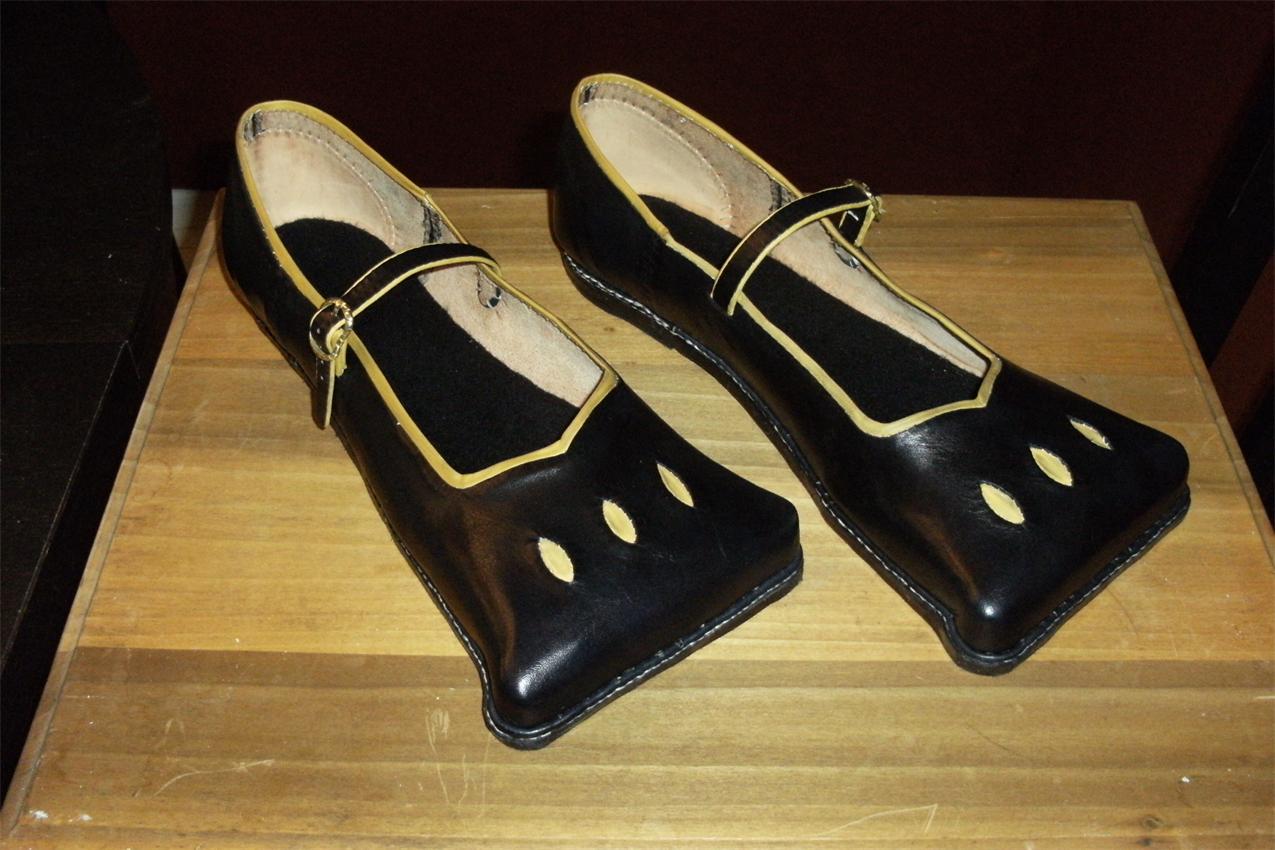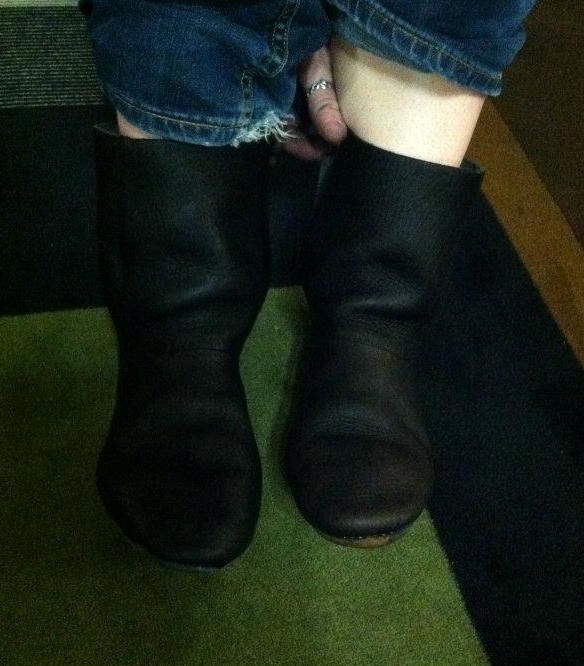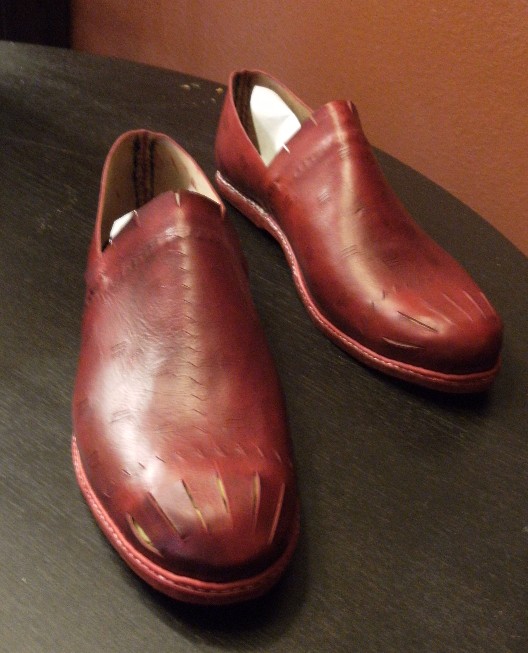 |
I just posted a new Lesson on Early 16th C. Cow Mouth Shoes, or Kuhmaulschuh. The tricky thing about these shoes is handling the “knob” type of construction at the tip of the toe. Enjoy! | |
Sewing the Heel Stiffener
 |
I just posted a new tutorial on Sewing the Heel Stiffener. A very large percentage of historical shoes have some kind of heel stiffener in the quarters of the shoe. These stiffeners, usually a half-moon shaped piece of leather, were tacked in around the top edge and then caught into the lasting margin to keep the heel of the shoe in better shape. In earlier viking shoes, however, the sole actually extended past the back of the heel and up the quarters a little, negating the need for a stiffener. But for the majority of medieval shoes and shoes in the Renaissance, there was typically some kind of stiffener tacked in. | |
1570s Red Shoes…
Shoemaking in New Mexico…
I ended up visiting Los Alamos, New Mexico, for some work related activities, and while I was in the area, I taught a class on basic turnshoe construction and shoemaking. I packed a bag full of lasts, thread, bristles, wax, tools., etc. and made up a ton of stitching hanks in advance to prep for this. It was a great success, though we put in many more hours than I had expected we would need! A couple of things to note for next time:
1) Limit the class to four maximum – as it turned out, we only had four anyway, but this is really the most I could handle easily without going too crazy.
2) No tall boots! Ankle boots with one seam should be the tallest option. Otherwise, there is simply too much stitching to do.
3) Choose three styles of shoe, and stick to those. We spent a lot of time patterning, and I think that put us behind.
4) Stitching blocks and stirrups – everyone needs to have one. It makes life tons easier.
5) Thickness of leather – don’t try and compensate for difficulty in closing by selecting a heavier leather. It only makes your life more miserable in the end. You end up with a higher propensity for breaking awls, and it makes the shoes much more difficult to turn.
 |
One of the finished results of one of our students – not only did all of the shoes fit, but they all looked quite fantastic! Picture courtesy of Avivah. |
|
